GARY RYDSTROM is a name synonymous with excellence in the sound industry. An acclaimed sound designer and re-recording mixer, as well as a long-time collaborator with Steven Spielberg, Gary has seventeen Academy Award nominations to his credit and has won the Oscar seven times, in addition to being the recipient of the prestigious MPSE Lifetime Achievement Award. Gary’s presence in the sonic soundscape goes back to 1983 when he began his career at Skywalker Sound working with the legendary “Star Wars” sound designer, Ben Burtt. Venturing beyond sound and into directing, Gary’s directorial debut was for the Pixar short “Lifted”, for which he received his fourteenth Academy Award nomination. Most recently he helmed his first animated feature for Lucasfilm, “Strange Magic”. But for Gary Rydstrom, it always comes back to sound.
Renowned for his attention to aural detail and creating realistic sound effects, Gary now re-teams with Steven Spielberg for THE POST, a film set during a period of history and in an industry where sound was king – a 1970’s newsroom. From the minutiae of specific typewriter keys, to typesetters, to printing presses, to the crinkle of newspaper, to the hustle and bustle of a newsroom, to the scuff of shoe leather of the era, to gunfire, to rotary phones and payphones, to the clicking of keys and lighters, protesters and Pontiacs, Gary Rydstrom delivers a truly immersive sonic experience with THE POST.
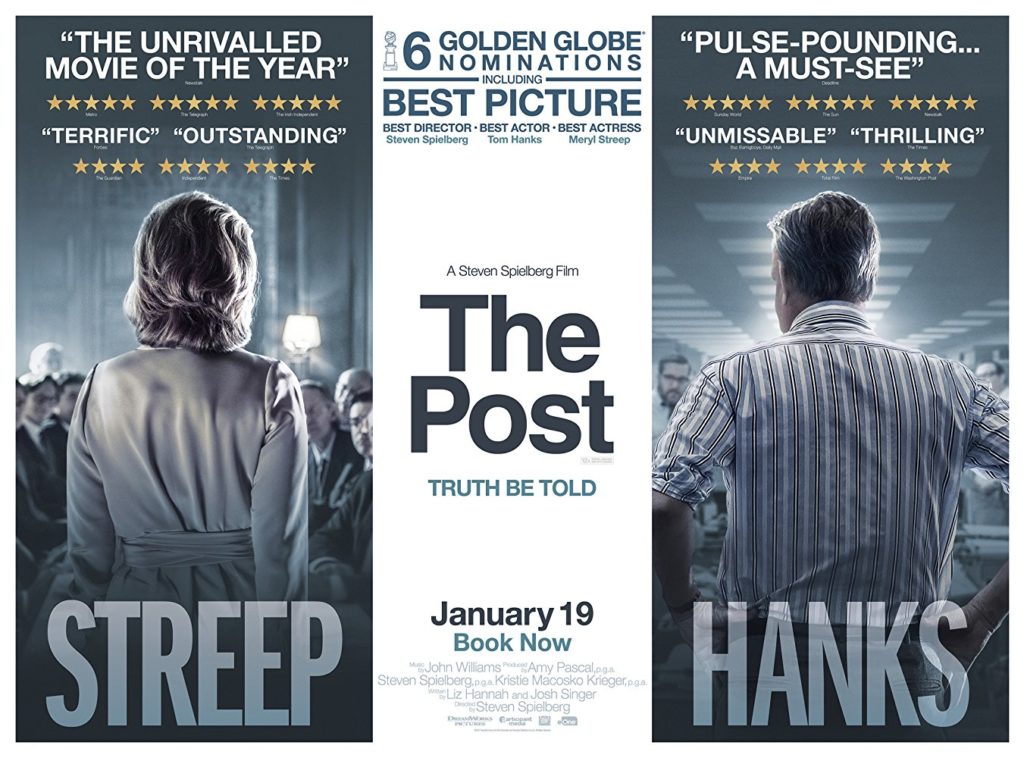
Starring Tom Hanks and Meryl Streep, THE POST focuses one of the most fascinating and turbulent times in the history of the United States. From the battlefields of Vietnam and the typewriter of military analyst Daniel Ellsberg to the Supreme Court of the United States, we watch the underpinnings unfold of what we would come to refer to as “The Pentagon Papers.” Disgusted by the government’s cover-ups and lies regarding the United States’ involvement in Vietnam, Laos and Cambodia for decades, Ellsberg copies top-secret files outlining the truth and US involvement and disseminates then to the New York Times. Folding to legal pressure ion publication of what was to be an extended series expose, the Times stops publication of “The Pentagon Papers”, but Washington Post editor Ben Bradlee determines that the Post will now pick up the mantle and publish. Obtaining his own copy of the papers from Ellsberg, Bradlee, together with Washington Post owner Kay Graham, put their careers, and the future on the paper, on the chopping block as they proceed with publication despite a Federal restraining order that could find the paper shutdown and all the principals involved indicted. Fighting for Freedom of the Press, Graham and Bradlee take a stand that will forever change our ideals – and our new reporting.
Always a pleasure to chat with Gary (last time for “Strange Magic”), I had a chance to speak with him in-depth once again, this time talking all things sonic about THE POST.

I am thrilled to be talking with you again, Gary. It’s a while since we chatted about “Strange Magic.” You were in Shanghai when we did our interview over the phone. I still love that film. That is one of my guilty pleasures and I just watched it again over the holidays. STARZ network was showing it and I just had to watch it – twice.
Oh, I remember that well! I appreciate that. I’ll take every bit of fandom I can get. [laughing]
Well, I’ve got more fandom coming your way regarding the sound design of THE POST. I have to tell you, my two favorite aural experiences this past year are THE POST and “The Beguiled” thanks to what Richard Beggs did with silence in “The Beguiled,” and what you do here in THE POST with this incredible layering of sound, amazing.
Well, thank you.
The sound design of THE POST is what really builds the excitement of what’s happening. You know what’s happening. Anybody that followed the story of the Pentagon Papers, or any journalists, we know how groundbreaking this story is, and what a landmark decision that Supreme Court decision was. But to hear all the tiny little elements, the various typewriter keys of different typewriters. You had Royals, you had Underwoods. It’s complete immersion.
Yeah, that’s true. There was a variety. These days, all the computer typing in offices is both boring and it always sounds the same but then, every typewriter was different. Made for an interesting collection of sounds.

It built excitement. And then we can hear the typesetting and the clink of each one of the letters as it gets set, and then the printing presses. Just outstanding. You go so deep with the specific soundscape. And you’ve got the archival footage in there, too. I know that’s always difficult to meld, to bring in and to retain the sound quality of that era while making it cinematic and film worthy and screen worthy. So how did you and Steven [Spielberg] go about putting all of these layers together to get such immersive emotionality and build the tension here? I had to go back and watch the film a second time just for your soundscape.
Oh, I appreciate that. That’s nice. Well, the layered sound that Steven was most interested in, in getting right to his ear, was the newsroom sounds. I found it an interesting time both because it was loud. I mean all that stuff, the teletypes and the digium of manual and electric typewriters and telephones with a real phone ring, it was real bells. It was intense. There was a moment where Ben Bradlee taps the desk of a secretary and he says, “Oh, what fun!” He just gets off on the excitement of the newsroom. It’s not an ambiance we hear anymore. I think, luckily for the film, that kind of ambiance of typewriters and activity and phone rings and teletypes and that kind of thing fits the energy of the film.
If you look at the film, it’s different times of day. It’s not always full out busy. There’s a night shift where they’re doing a different kind of work, so there’s less typewriters and different kinds of sounds. So it’s always shifting a little bit. Steven was very interested in getting that right to his ear, so that it had the right amount of energy. I’d never done a movie with a 1971 newsroom, so I was happy to do it.
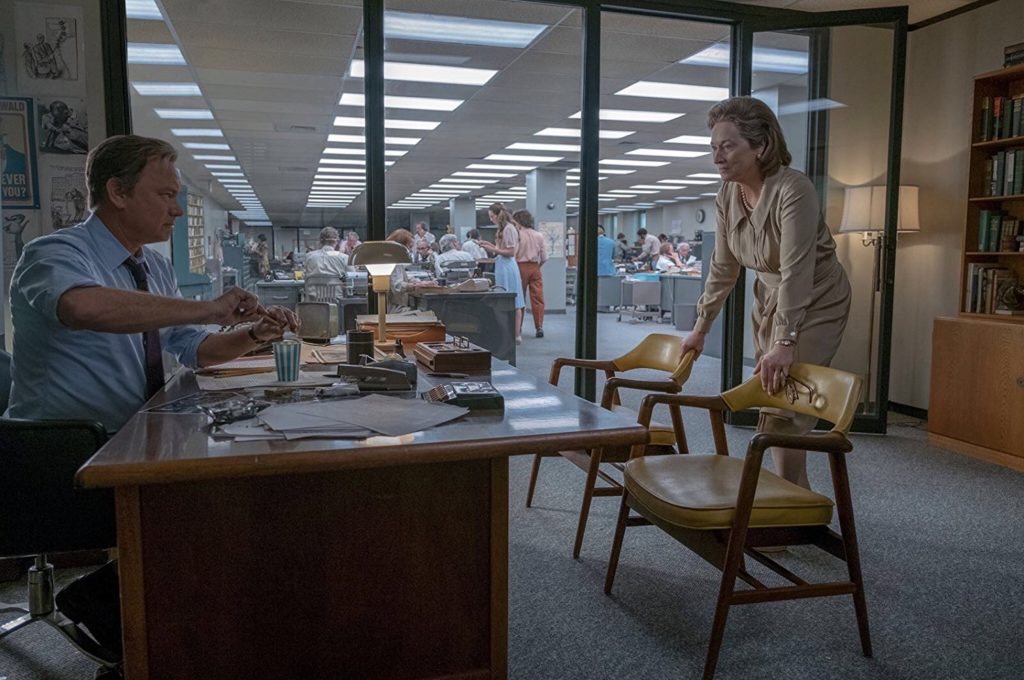
There is that unmistakable quality and sound in a newsroom, but nothing, nothing is as textured and beautiful as that 1970’s period. It’s because of the machinery at the time. You just captured it all so beautifully. When I saw the teletype, I thought I was going to jump out of my chair. It’s like you went to the Elias homestead in Philadelphia and you took everything out of my dad’s basement that he accumulated over his years in broadcasting, including a teletype.
For me, this is personal because my grandfather worked in the pressroom for the “Chicago Daily News.” When I was a kid I would go visit him, so I would see the typesetting happen and they’d always give me the little metal things with my name spelled out. I watched him work and I’d wear the little white [hat], the newsprint that turned into a little square hat that they wear in the movie. My grandfather ran the presses. This is a movie about the difficult decision about whether to go to press with something. Lucky for the feeling of the movie that the process of going to press was physical, an immensely physical job to do the typesetting, and typing up the story, doing the typesetting. Got the pneumatic tube that sends the articles down to be typeset, and then you got the printing presses that run and the trucks that deliver it. It’s a real material way of making something, so that gave us great opportunities. Spielberg’s always great for these kind of ideas, and I think this is something that he took from the reality of “The Washington Post,” 1971, which is the newsroom was directly over the pressroom, the printing press. There’s a scene where Bagdikian is typing and then the rumble starts when the presses go and the pencils rattle on his desk. It tells you that the press is going. “The Washington Post” was a smaller paper then and everything was kind of combined so it was a great sound moment to have, that sound of the press go from beneath Bob Odenkirk’s desk.
Then, of course, to have Odenkirk when the pencil starts rolling on his desk, and we hear the pencil as it rolls, because nothing sounds like a number two pencil but a number two pencil.
Right! Crazy stuff we did, especially the foley people. They found old newsprint and paper because the sound of paper has changed over the years. Not to mention old shoes. The correct pencils and telephones. It’s fun to do that kind of research and bring, try to bring, 1971 back to life.
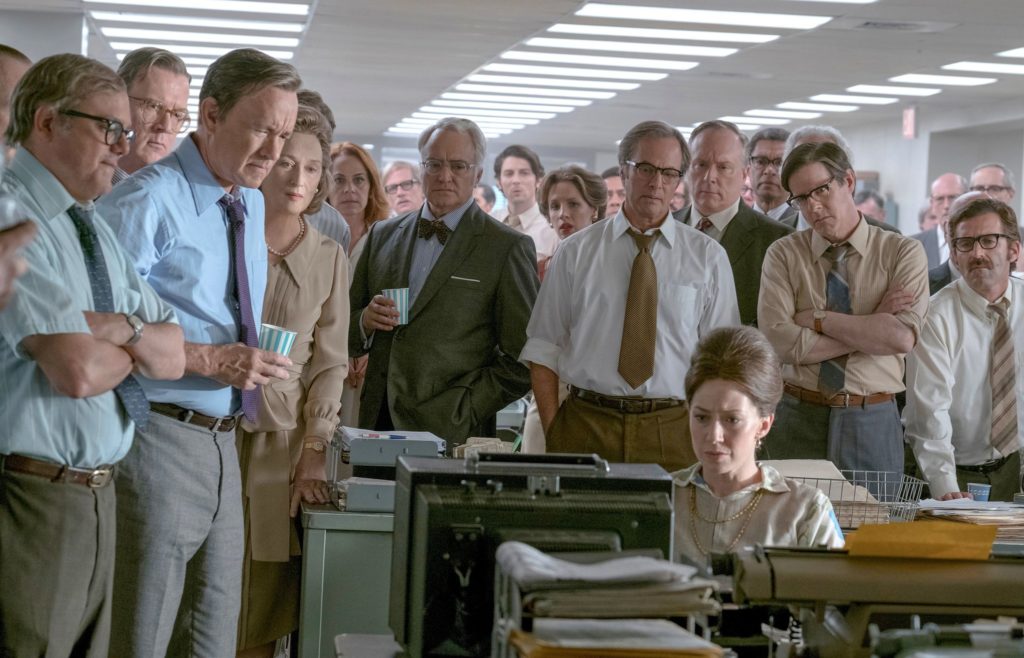
Well, you did, right down to actually the sound of the string that tied the bundles of paper together. We actually hear how it crunches the paper when they pull it tight on it. You captured every little detail, Gary. It is just so amazing.
It’s nice to hear your reaction because it’s the kind of sound job where it’s about the little details. It’s not really about big things, aside from one Vietnam battle. It’s not big, but it’s about details. I love what sound can do for the tiny things now. There was a moment where Meryl Streep’s character, Katharine Graham, is nervously fiddling with some car keys when she talks to Robert McNamara, so we foley that. It’s little touches and details that add to the storytelling of the movie.
Even the sound of her glass frames as she kept playing with her glasses in her hand.
Oh yeah, yeah! It’s fun. I love when you do sound in a movie. We often play with the dialog so that we know we’re putting in the right sound, ambiances, and such. It allows you to watch someone like Meryl Streep act without hearing her dialog and see what that does. It’s amazing what a great actor like Meryl Streep, what they communicate when you can’t even hear what they’re saying. All those things you talked about, playing with the glasses and fumbling with the keys. The way she kind of awkwardly moves around the world in the first part of the movie. It’s great to see not only her expressions but her body. The way she moved was very precise and wonderful. It’s a good way to appreciate great acting.
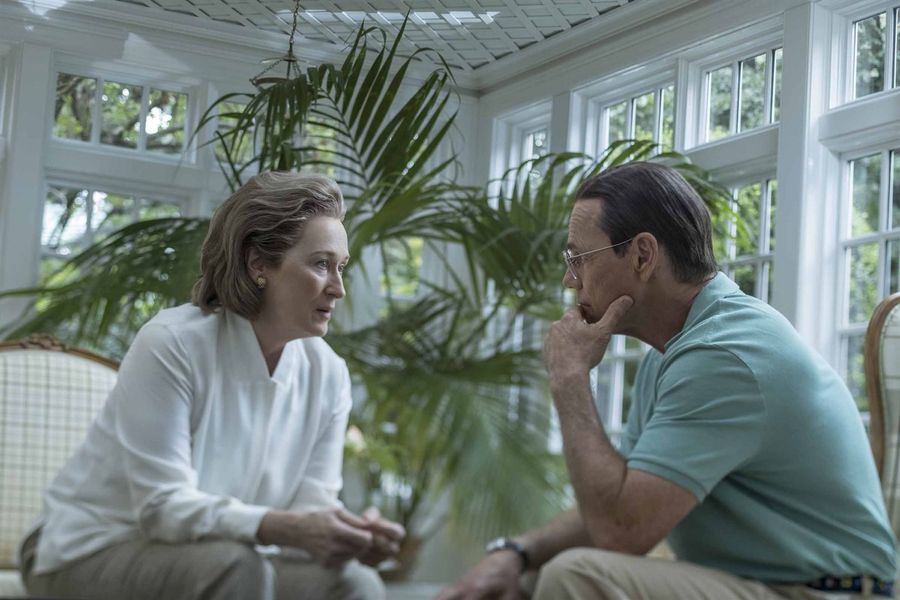
I’ve always said about silent films or foreign films, it’s a testament to the film when you don’t need the dialog to know what’s going on. THE POST is very much that. You can just watch great acting, but then you hear the sonic background, that tells you everything you need to know. Something that struck me immediately at the beginning of the film was the gunfire in Vietnam. The gunfire of Vietnam, very metaphoric, very akin to the typewriter keys as the character of Ellsberg is tapping on the keys right there in the jungle.
Well, first in the Vietnam battle, one of the important things is the Vietcong are shooting AK-47s so they’re rapid fire. Then the Americans are shooting M1s, which are slower fire, so it’s meant to feel like we’re outgunned. I wish I could have transitioned an AK-47 into a typewriter, because the way the movie was, we do a fancy dancy thing and transition an AK-47 machine gun into a helicopter rotor blade. That goes in the scene that eventually we see Daniel Ellsberg typing. Again, it’s mechanical, mechanical sounds. Bridging, the very beginning of the movie was trying to bridge the experience of Vietnam into Daniel Ellsberg, into the Pentagon Papers, into Katharine Graham, sort of take a line. We first see her waking up with a nightmare in bed, so a nice beginning. Everything connects very well, and our sound people got to do fun transitions from one scene to the next to link them together.
Of course, the metaphor and the whole idea of waging war. Waging war on the battlefield, waging war with the press and the Nixon Administration. Waging war as a newspaper. It really all comes together so beautifully. I’m curious, Gary, how much of the sound was actually caught within the production and then how much was actually added in later through foley or through effects?
As usual, the main job of the production recording, which was done by Drew Kunin, was to get the actors, get the dialog. There were working typewriters and things around the set that did stuff. Occasionally, we made sound, but they tried to repress that as much as possible and get the dialog. We had the production sound from the set, for the most part, is just dialog, and everything else is taken away. They did do a lot of second unit shooting with the printing press that’s in the movie and the typesetting that’s in the movie. We had those real sounds. What you learn in sound is sometimes you have to exaggerate. There was fun things. The typesetting, we could do sounds that might not be typesetting but had a musicality to them. To me, they sound like a toy or a musical instrument or a pachinko machine. They’re really great, metallic, musical clacking, sorting sounds I loved. The printing press that they recorded and that they shot didn’t have the weight that we wanted for the movie, so we used machinery that really wasn’t printing presses, kind of cheated but that’s … The sound we got from the movie, from the set pretty much was just dialog. Then we had the fun of adding everything else.
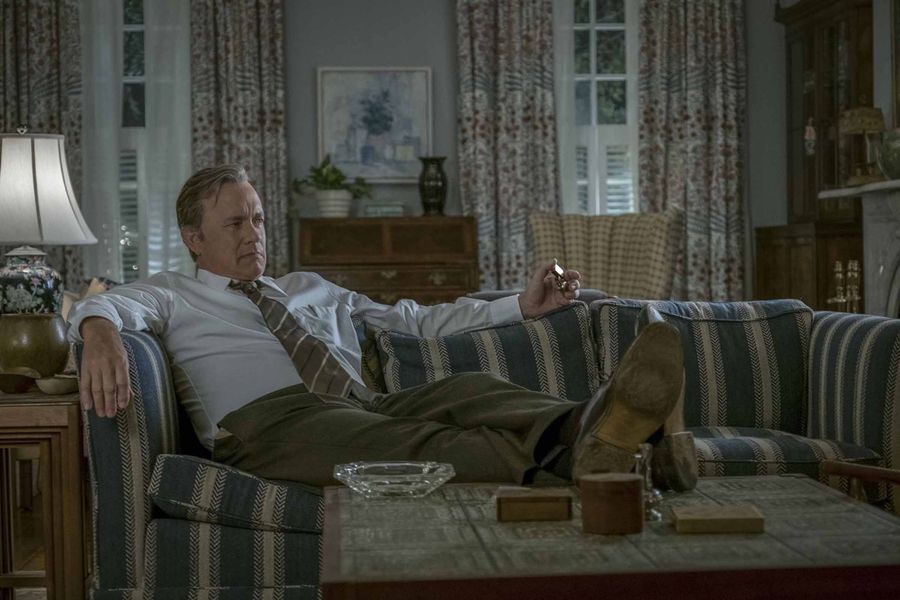
Also, you’ve got to layer in John Williams’ score, which surprising light-handed. His score is surprisingly light-handed. Generally, his scores are richer, deeper, more epic, but here, he really went with the lighter touch with the scoring, which complemented the sound of the typewriter keys and the printing presses and the typesetters.
This was a tough movie to score. I think he would admit that too because it’s not your traditional, emotional, play to the characters’ emotions score. There are moments like that when Meryl Streep talks about her life and her husband. There’s moments like that, but a lot of the movie for the music is about the energy, same thing we’re trying to do with the sound effects. There was a percussive, rhythmic element to a lot of the music that propels the movie. It is very typewriter-like, you’re right. I think it probably took some inspiration from the sound of that, of the typewriter. There’s a percussive and rhythmic element that helps make the … People respond to the movie moving fast. I think one of the reasons it moves fast is the score is used in the right places, and it has the right propulsive feel to it.
How early did you come onboard and get involved in this film? You’ve worked on so much bigger epics, of course, and you got an Oscar for “Saving Private Ryan,” “Titanic,” very sonically intense films. So, I’m curious how early you came on with this film to start mapping out your soundscape.
I don’t think anyone on this film got to come on it early because it happened so fast. Lucky for us, we had a whole crew working on “Ready Player One,” which is what we’re working on now, [Spielberg’s] next film. He already shot “Ready Player One,” and we were in post on that movie when we got the word, “Hey, he’s going to shoot another movie quickly. Then we’re going to mix it quickly.” It kind of fell into our existing schedule. As soon as we knew about it, our job was to go and find things to record. The whole thing was fast, which I enjoyed. A lot of the people I’ve talked to who worked on the film enjoyed how fast it was made. Because there’s an energy to that, and people equate it to the energy of a newsroom. With journalism, you’ve got to move fast. Sometimes that’s good for movies to not wear it out and do something from your gut and do it fast. We didn’t have a lot of time, but the first thing we do is, there’s a great store in Berkeley called California Typewriter. I knew about them because we had worked, we had done a documentary called “California Typewriter,” which I recommend. It’s wonderful. It’s about this store that refurbishes and sells typewriters. People are into that, even young people are buying these old typewriters. I don’t know why. There must be some psychological reason, but that was a wonderful resource. We could borrow some, a variety of typewriters from them. In doing so, I found out that one of the great typewriter aficionados in the world is Tom Hanks.
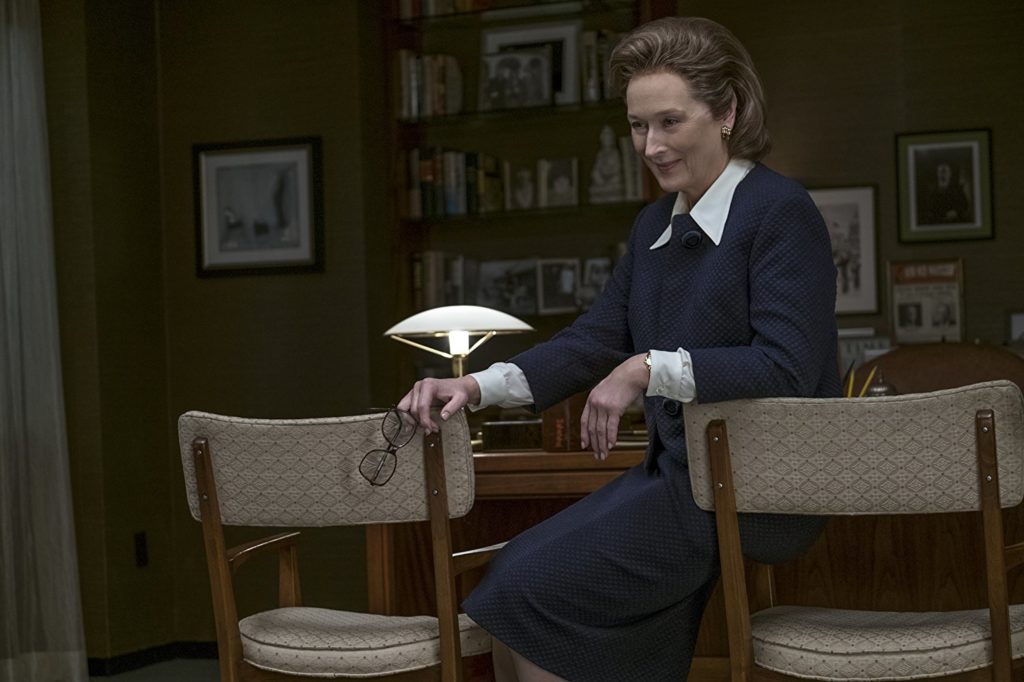
Yes indeed he is. I was wondering if he loaned you any of his.
I didn’t think to ask, but we got plenty from California Typewriter. When I saw the documentary about them, and in the documentary is Tom Hanks waxing poetically about typewriters and how they feel. That made him even more perfect for this movie. Yeah, I grew an appreciation for both the range of typewriters and people who love them.
What was the most difficult sound to capture or to locate for this film?
Well, you know what? The hardest thing were big printing presses, and we didn’t find them, we cheated them. The printing presses that roll these days, that actually print newspapers or books are smaller. They’re not that kind of printing press that I remember from my grandfather at “Chicago Daily News.” It’s not that massive, over the top, industrial thing. We had to kind of manufacture that. Typesetting is really easy to find. We found great people that still do typesetting. We found great collections of old phones, old cameras, things like that. Then once we get the typewriters, then what you do is you record them in different rooms and from down the hall or the other side of a wall. Same thing with telephones. You got all these elements recorded in a real space. Then you’ll use those to layer up into the newsroom sounds.
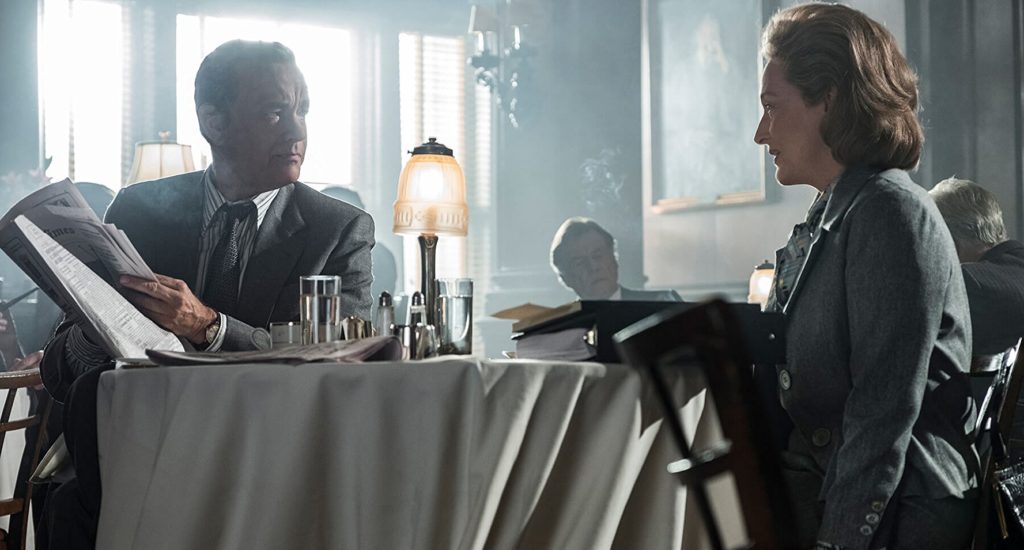
That’s something that I appreciated with the phones, with the typewriters is that so often anymore in films where we have phones ringing or somebody’s clacking on a computer keyboard, every sound, even if it’s from another room, the sound is done so it’s like it’s right there in the same room. You don’t get any sense of distance or scope as to how much activity is really going on and the extent of it, but here-
You can artificially create that as well as you can if you try. We took typewriters and we had people typing and then we’d record down the hall or in another room. In Ben Bradlee’s office, we wanted the sound of typewriters in the office, but through a glass wall. The best way to do that is to record it that way. That’s the fun of it, is recording that kind of stuff. I was really proud of this really subliminal idea that no one would ever pick up on in the movie, but “The New York Times,” the movie has an office that’s a secret office. They don’t want anyone to know that they’re doing the Pentagon Papers work so they’re holed up somewhere outside of the normal office in a room that you need a secret knock to get into. We recorded old-fashioned telephones with bells, but we taped them. I figured that maybe “The New York Times” would try to stay stealthy, would let the phones ring but try to minimize the sound of the bells, so we would put masking tape on the bells of these old phones and let them ring, but then that kind of muffled quality. It’s a subliminal thing, but I thought, “Well, maybe that’ll help add to the spy movie feeling of those Pentagon Papers offices.”
I love that! There definitely is a great spy thriller sense to this film.
Yeah, it is. Spielberg is very good at taking stories that are historical and telling them in a very cinematic and dramatic way. I hope he keeps making these movies because no one really does it like he does, and it’s thrilling. As you say, you know the outcome of the story already, but it’s still thrilling to watch.
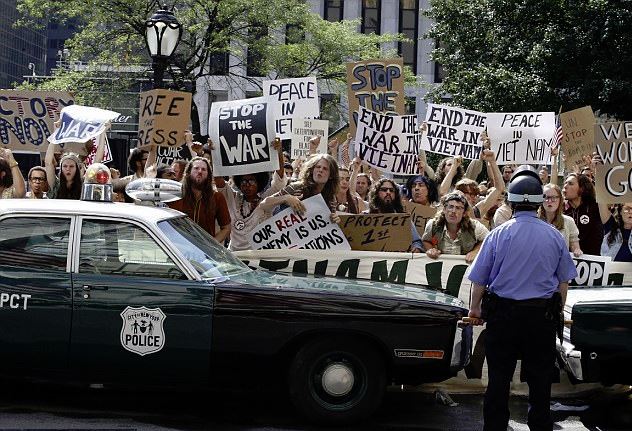
It’s the journey, because so often we lose the journey. Especially a story like this that so many of us remember in that we lived it or studied it in school, but to see the journey unfold is the very exciting part. Did you have to find, or did Steven find, the actual audio and video recordings of the President speaking over the decades? Each President talking about Indochina and Vietnam.
Well, they got the tapes. They’re public, so they got a copy of the tapes and sent them to us. It was a very clear idea that he wanted to use the actual recordings of Nixon throughout the movie. Our job was to clean them up as best as possible. You can imagine, they’re not the greatest quality. There was, and it was okay with me, there was one line that we had to mix the sound to like try to make something clear because it wasn’t as clear on the tape. 99 percent of it is the Nixon tapes and we did whatever current modern processing to make clarity because it wasn’t very clear. That was fascinating, for the time that we had, all those tapes, and we were going back to the originals. Sometimes we got lost in listening to Nixon for a while because it’s history. It was good idea to have him speak for himself. I mean, these are the things he said, and to hear him say it was the right choice. It gives you the sense of these are the real events. This really happened, so it was a good choice.
Because you yourself stepped into the directing chair and you have now directed your own films, has that impacted you in your past couple films since “Strange Magic”? Has that impacted how you approach your sound design? Does it give you a different perspective in how you approach the design as a whole and what you need and want to achieve?
I used to joke that when I did sound for movies before I did any directing, while I was on the show doing sound, I would take it as my movie. I’d almost get annoyed when the real director would show up for final mix and take over. “Wait, I’m in charge.” I had that attitude. Directing is always good, because it helps focus on storytelling, and all aspects of filmmaking are dependent on storytelling. It’s probably made me more aware of how a director and how the movie are trying to tell the story. Then our job with the sound is to try to help that and clarify it and then emphasize it. Spielberg movies are really good to me at being clear about what his goal is in a moment or a scene. It’s very clear what he’s trying to do, what the movie’s trying to do, so that helps me figure out what the sound should be, and I did. It’s great to work on Spielberg movies and study how he stages scenes, and how he works with actors, and where he places the camera. Maybe that’s what I’m doing more than ever is having done it, now I can really appreciate even more watching what he does. He’s still the master.
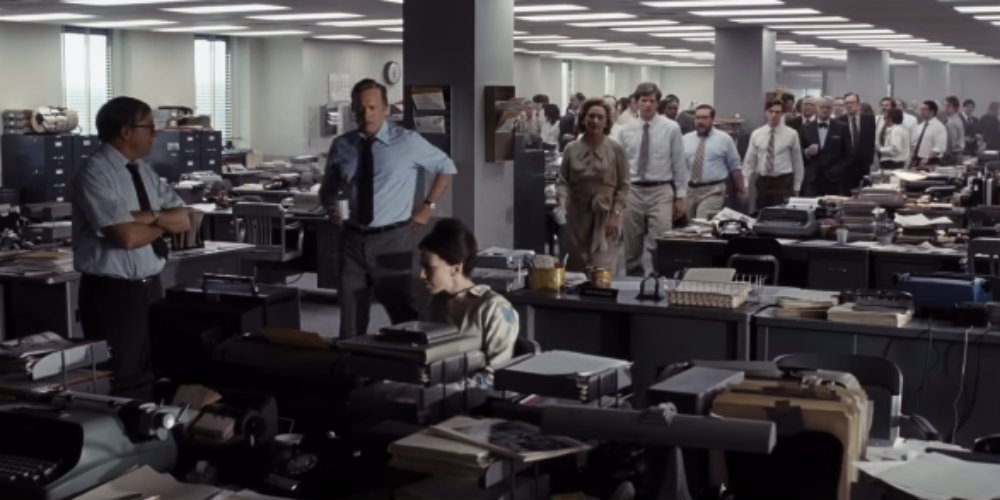
I’m curious, Gary, what equipment were you doing the mixing on, and did you record this in Dolby, did we go with Atmos?
We did not do Atmos. I premixed the movie up north. Tom Myers helped me premix effects because I was on two shows. We premixed at Skywalker Sound on a Neve EFC, then I’d come down to Andy Nelson’s stage at Fox Studios. He’s got the same exact console. We mixed the final mix down here at Fox, mostly because it’s convenient for Steven and for John Williams to come by the mix and sit with us. Coming down to LA is not easy, but it’s nice to sit in a room with Spielberg and John Williams and work out the mix. It was worth it for that.
Because of the expediency in getting this film made, because of the timeliness of this film given today’s climate, what did you take away from this experience of working on THE POST?
You know what? The movie is a lot of things. You say it’s timely because it’s about freedom of the press. It’s also about a woman and a man’s world, and a woman having to deal with running a company. That’s just as interesting a story now as it was in ’71. One of the things I took away from it was related to that physicality I talked about. Putting out a paper was a physical act. Really if you think about it, the movie is about people doing a job, doing their work. I like that it’s nice to be reminded that jobs are important, taking jobs seriously are important. It was nice to see people, see characters in this movie struggle but who really are passionate about the job that they do. The movie, I think, an aspect of it that isn’t as obvious, but it’s a movie about the power of doing a good job.
by debbie elias, interview 01/12/2018












